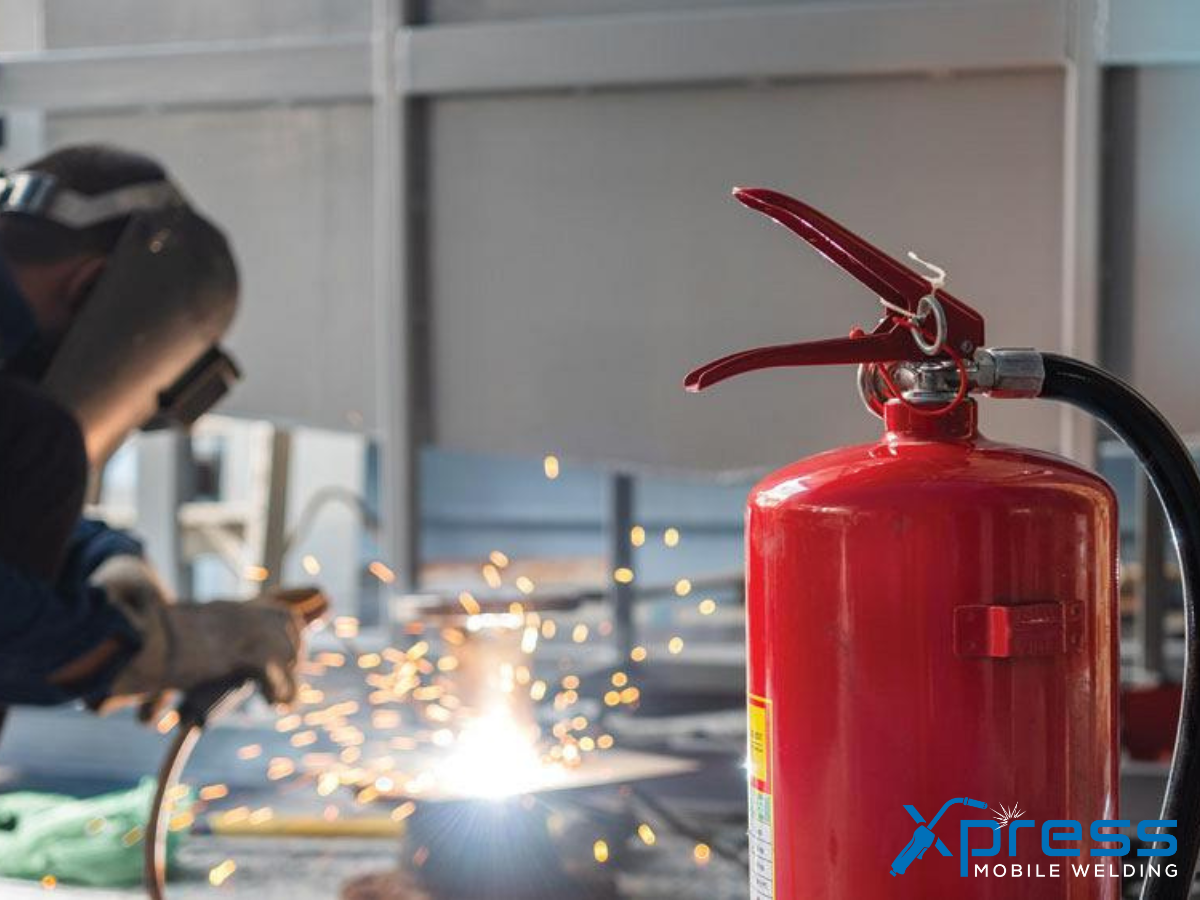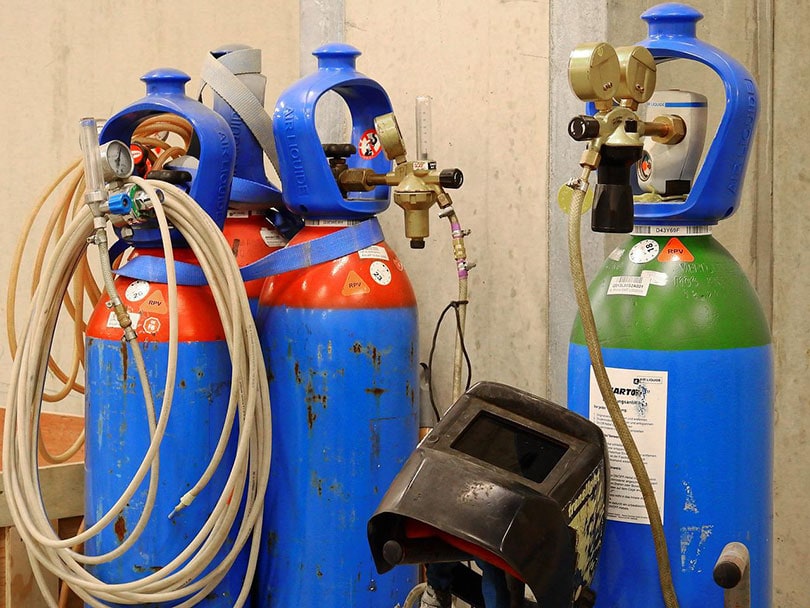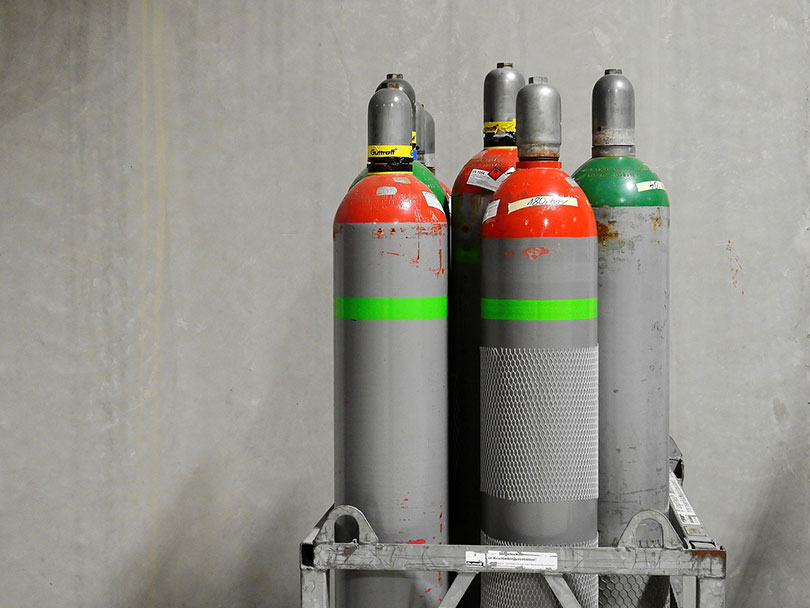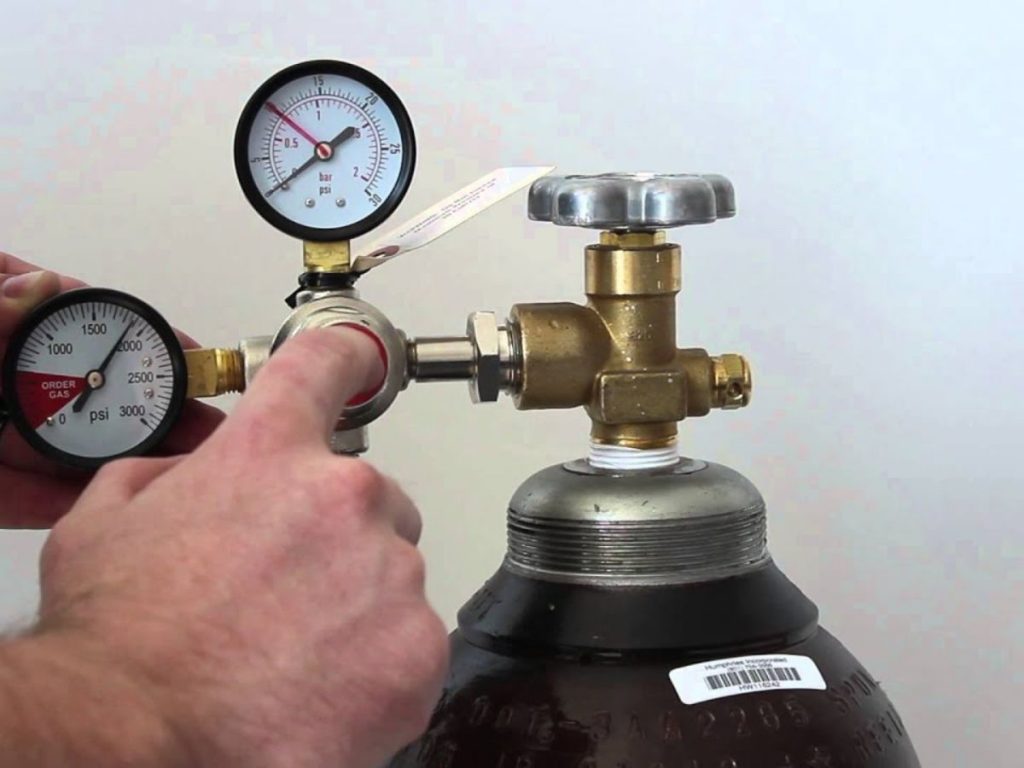Argon Pressure for Mig Welding – To Protect That Beautiful Weld Pool
MIG (Metal Inert Gas) welding is a versatile process that uses an arc between a continuous wire electrode and the base material to produce high-quality welds. A key component is the shielding gas that protects the weld pool from contamination. Setting the optimal gas pressure and flow rate is crucial for proper shielding.
Getting the gas pressure wrong can lead to issues like porosity, poor fusion, and excessive spatter. This article will cover the factors that determine ideal MIG welding gas pressure, including:
- Wire diameter
- Material thickness
- Welding position
- Travel speed
Let’s Get Gassed Up!
When MIG welding, you need the right shielding gas to protect that beautiful weld pool. Think of gas as the bouncer at an exclusive club, keeping the riff-raff contaminants out!
The most popular options are:
- Argon – Colorless, odorless, and ideal for steels. This bouncer doesn’t mess around!
- CO2 – Cheaper but less stable. Better suited for thin materials.
- Helium – Lightweight and great for penetration. Can be a little wild, though.
- Nitrogen – Works with stainless steel but can get feisty. Use sparingly.
- Oxygen is not inert, so it can party too hard and create oxides.
You can use these solo or mix-and-match to get the right vibe. Some sweet combos:
- 75% Argon / 25% CO2 – Tried and true for mild steel.
- 90% Helium / 7.5% Argon / 2.5% CO2 – Classy blend for stainless.
- 50% Helium / 50% Argon – Smooth operator for aluminum.
The goal is to find the perfect posse to keep your weld protected. But don’t overwhelm it! Too many bouncers create chaos. Start with a pairing like argon and helium, then tweak the ratio from there.
Keep in mind the type of metal you’re working with. Match the properties of the gas to the needs of the material. It’s about balance!
Now grab your favorite gas buddies and get welding! Don’t forget the queue stretches around the block for quality welds, so bring your A-game.
Goldilocks and the Gas Pressure
Alright, we’ve got our shielding gas squad. Now we need to set the pressure!
This is vital for weld quality. Too low, and contaminants sneak in, causing porosity. It’s too high, and you get turbulence that also allows contamination. We just want to be right in that sweet spot.
Think of it like the story of Goldilocks and the Three Bears:
- Too hot porridge = too high pressure
- Too cold porridge = too low pressure
- Just right porridge = optimal pressure
You want the pressure that’s not too weak or strong – just right for excellent weld protection!
Low-pressure symptoms:
- Porosity – harmful gas bubbles in the weld
- Discoloration – from oxidation and contamination
- Poor fusion – lack of penetration into base metal
Fix by slowly increasing the flow rate.
High-pressure symptoms:
- Turbulence – swirling sucks in outside air
- Spatter – sparks and metal drops going rogue
- Irregular bead shape – uneven coverage
Fix by slowly decreasing the flow rate.
Balanced pressure gives:
- Smooth weld bead – even shape and edges
- Good penetration – into the base metal
- Minimal spatter – tidy weld appearance
- No porosity – avoids weakening the joint
The optimal pressure depends on factors like:
- Material – penetration needs based on type/thickness
- Wire speed – fast melting of filler requires more gas
- Travel speed – faster motion demands greater coverage
Don’t crank the regulator randomly! Start with manufacturer specs, then fine-tune until you find the Goldilocks pressure.
Patience grasshopper! Perfecting pressure takes practice. But once you find that sweet spot, you’ll be welding like a pro.
Now grab your bears and porridge – it’s time to dial in your settings!

Dialing In Your Pressure
We’re narrowing in on that ideal gas pressure! Let’s go through the factors that determine your settings.
First up – material type and thickness. Thick pieces need more heat and penetration. Crank up the pressure so that shielding gas can work its magic! For thinner metals, too much gas velocity can blow the weld around. Back off the pressure and use a lower flow.
Next – wire diameter. Fatter wires melt more sluggishly. Give them an extra gas boost to keep things moving. For thinner wires, too much gas will create turbulence, so reduce the pressure.
- Thick wire = higher pressure
- Thin wire = lower pressure
Nozzle size matters, too. Wide nozzles require more volume to maintain coverage. With narrow nozzles, a high flow rate blows the shielding envelope around and causes turbulence.
The welding position changes the shape of the weld pool. More gas coverage is needed overhead and vertically to envelop the weld properly and back off the pressure for flat welds.
Travel speed – a brisk pace needs extra protection to keep up. Up the pressure! Take it slower, and less gas is required to guard the weld.
Amperage – cranking up the heat? Give it more shielding, too! A hot weld needs plenty of protection. A lower current means less melting so that the pressure can be reduced.
Here’s a table summarizing the factors:
| Factor | Low Setting | High Setting |
|-|-|-| | Material Thickness | Thin | Thick | | Wire Diameter | Small | Large | | Nozzle Size | Narrow | Wide | | Welding Position | Flat | Overhead | | Travel Speed | Slow | Fast | | Amperage | Low | High |
Dialing in the perfect pressure takes testing and patience. But with attention to these variables, you’ll be rewarded with exceptional weld quality!

Reading the Gauges
We’ve got our pressure dialed in. Now, let’s look at measuring and controlling that gas flow.
The regulator has two important gauges:
- PSI – pressure in the gas tank
- CFH – cubic feet per hour flow rate
PSI must be high enough to push gas out. But focus on CFH for tuning your flow.
Fancy regulators have a flow meter – a clear vertical tube with a floating ball showing CFH. This eliminates faulty gauge mechanics.
To adjust flow:
- Open tank valve – start gas flowing
- Turn regulator knob – increase or decrease based on needed CFH
- Check the flow meter – set the ball to the desired rate
- Close the valve when done
Start with manufacturer specs, then tweak from there.
Remember:
- Too low = porosity
- Too high = turbulence
Listen for a steady hiss – that’s a good flow!
For CO2, use a regulator rated for it. CO2 gets very cold and can freeze regular gauges.
Pro tip: Add a flow meter to your regulator for accuracy. Guages can stick or falter. A flow meter won’t lie!
Monitor your gauges and adjust the gas pressure until you’ve found that sweet spot. Your dialing-in skills will improve with practice.
Now open the valves and let the shielding flow! It’s time to put those gas gauges to work.
Troubleshooting Tricky Pressure
Uh oh, something’s off with your welds. Let’s troubleshoot your gas pressure before you toss your MIG in anger!
Seeing porosity, poor fusion, or discoloration? The flow rate is too low.
- Check for kinks in the gas hose
- Test regulator and flow meter for issues
- Slowly increase pressure to add shielding
- Try a higher CFH setting
Are you observing turbulence, spatter, or weird bead shape? The flow is too high.
- Regulator might be busted – swap it out
- Valves could be leaky – replace seals
- Lower the PSI to reduce velocity
- Drop down the CFH incrementally
Still struggling? Whip out your MIG instruction manual for manufacturer specs on gas pressure. Reset to their settings and work up or down as needed.
Here’s a checklist:
- Inspect hoses, valves, regulator
- Adjust CFH flow rate up or down
- Switch out faulty regulator
- Reset to factory gas pressure settings
- Fine tune from there to perfection!
With diligent troubleshooting and dialing in the flow rate, you’ll get that flawless weld back quickly!

Safety First When Getting Gassy!
You’re excited to crank the gas pressure and lay down some sweet welds. But safety first!
- Inert gases can displace air and cause dizziness or worse.
- Work in a well-ventilated area.
- Monitor for leaks – tighten fittings if needed.
- Open tank valves SLOWLY. Sudden pressure is dangerous.
- Wear proper protective gear like gloves and eye protection.
- Secure tanks and prevent tipping/falling.
- Double check pressure gauges for accuracy.
- Follow all manufacturer safety guidelines.
Working with pressurized systems and flammable gases is a serious business. So please keep an eye on this and take precautions.
You got this! Now, get to welding – cautiously, of course. We want you around for many more projects. Safety and quality go hand-in-hand.
Conclusion
Achieving the optimal gas pressure is vital for quality MIG welds. Like Goldilocks, you need to find the setting that’s just right – not too low and not too high.
The many factors we covered impact your ideal pressure. Material thickness, wire speed, travel pace, position, and amperage play a role. Start with manufacturer-recommended settings, then fine-tune based on your observations. It takes practice to hone in on the perfect flow rate.
Proper pressure prevents contamination-induced defects like porosity and improper fusion. Turbulence is also avoided to give smooth, even weld beads. Take the time to dial in your gas flow using regulator gauges and flow meters. And don’t forget basic troubleshooting steps if you develop any pressure-related problems.
While this process involves attention to detail, the reward is pristine welds you can admire. So get your shielding gas, regulators, and metal ready. Ensure adequate ventilation and take appropriate safety precautions. Then start welding! Adjust your gas flow incrementally until you’ve found that sweet spot.
You’ll gain intuition for the ideal pressure settings with the right techniques and patience. Before you know it, you’ll have mastered gas flow control and be laying down beautiful welds. So grab your gear, channel your inner Goldilocks, and let the welding begin!
Your Burning Questions – Answered!
Have I got lingering questions about gas pressure? I’m here for you, friend!
What’s the ideal argon flow for welding mild steel?
For mild steel, 75% argon / 25% CO2 is primo. Set the flow rate between 20-30 CFH and adjust from there.
How do I know my pressure is too low or too high?
Too low = porosity and ugly discoloration. Too high = excessive spatter and turbulence. Listen for steady hissing.
Should I use 100% CO2 or a mix for steel?
I’d go mixed. 75% argon / 25% CO2 is the best of both worlds!
Is there a maximum flow rate I shouldn’t pass?
It depends on your nozzle size, but anything above 35-40 CFH will likely cause turbulence. Start low.
Should I constantly watch the gauges?
Check PSI and CFH frequently at first. Once dialed in, you can monitor less closely.
Do I need a special regulator for CO2?
YES! CO2 gets crazy cold. Use a regulator rated for it or risk freezing.
Still have questions? Hit me up in the comments! I got you. Now get welding, you brilliant MIG master!

